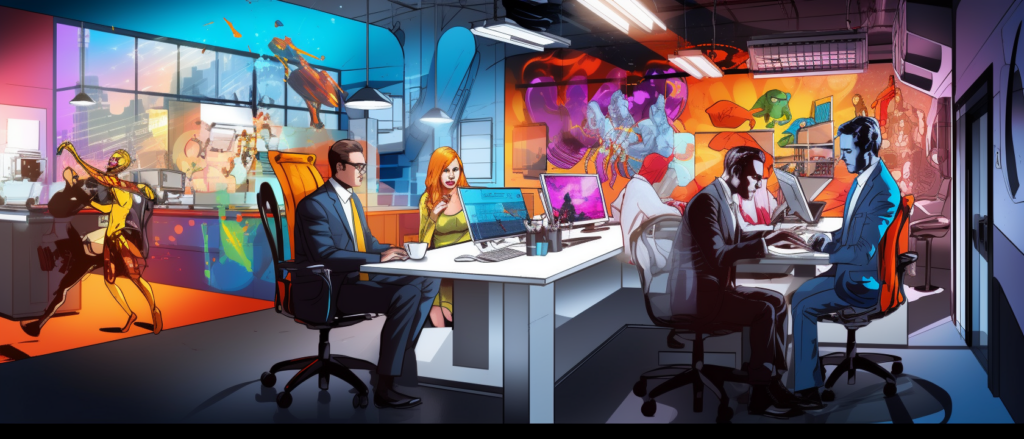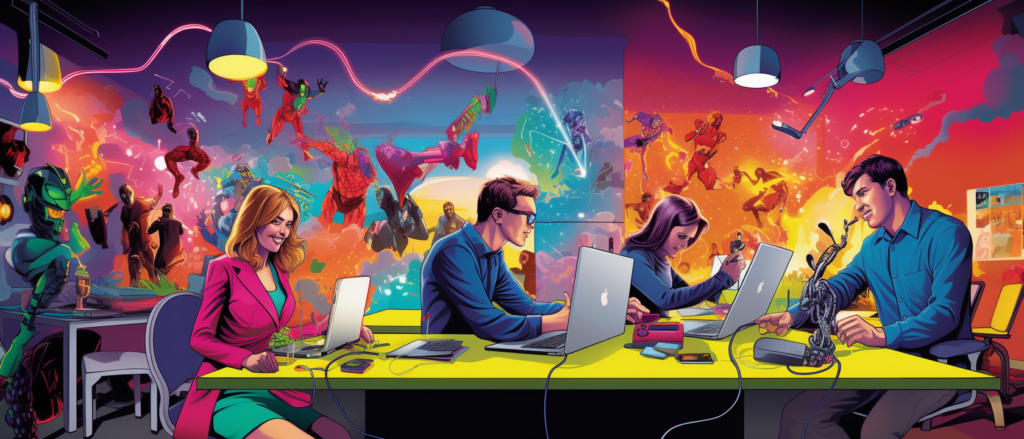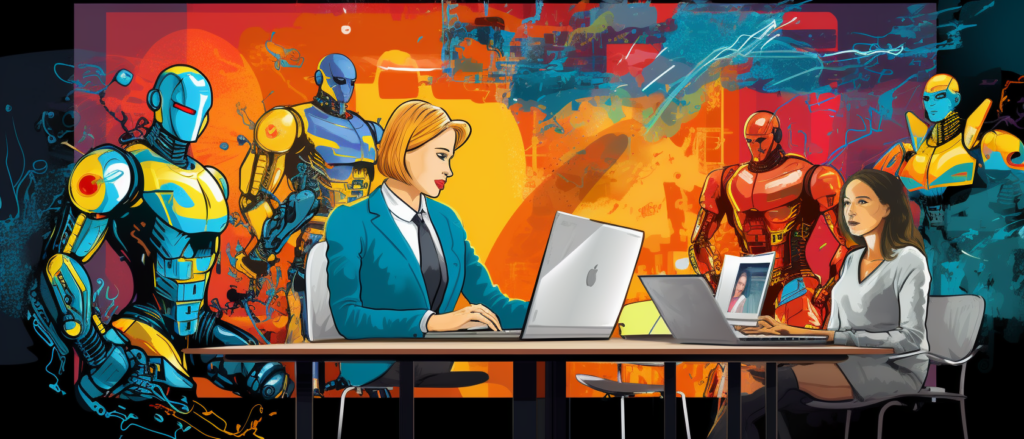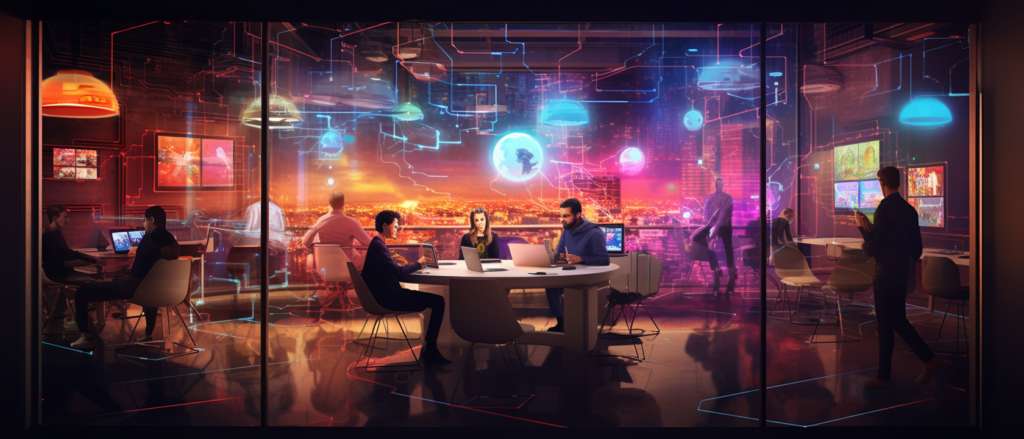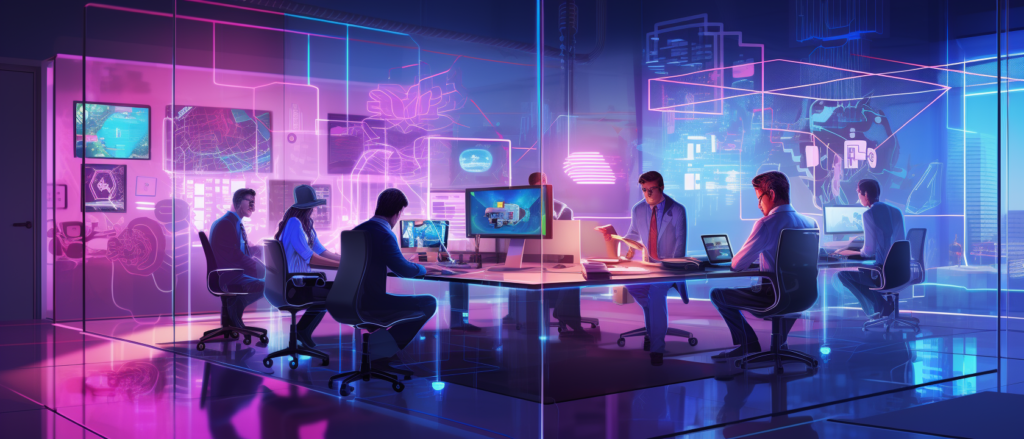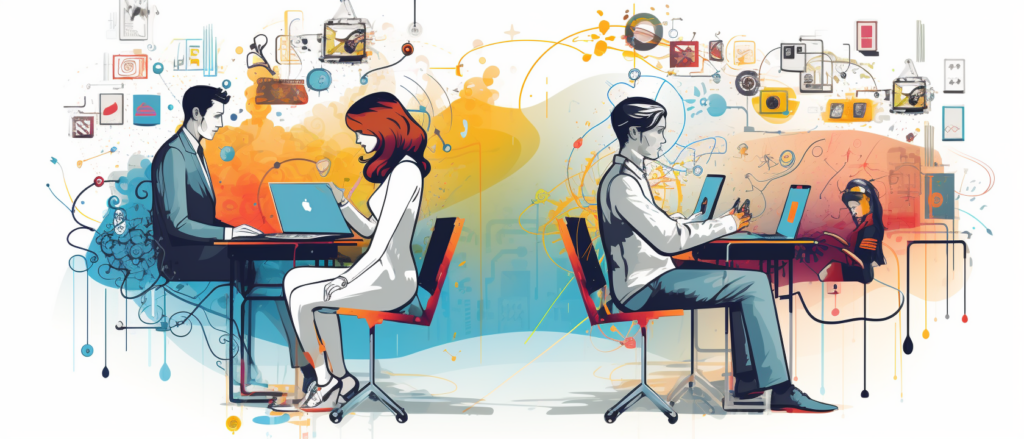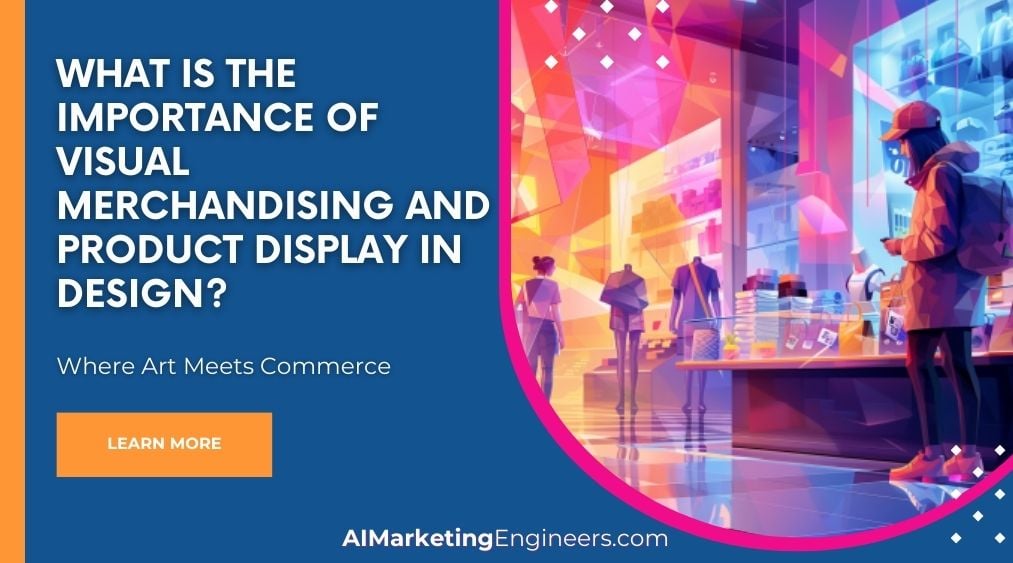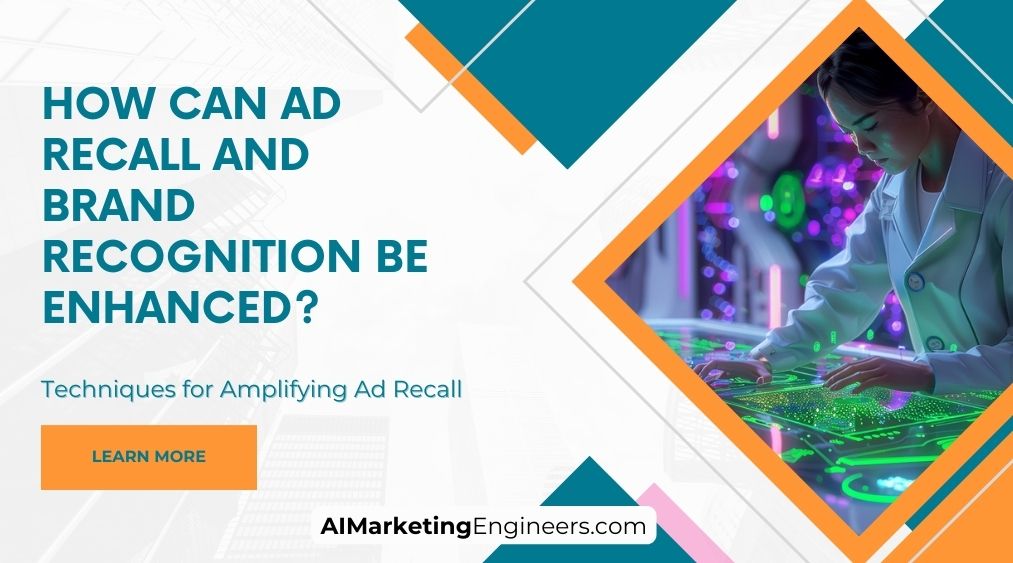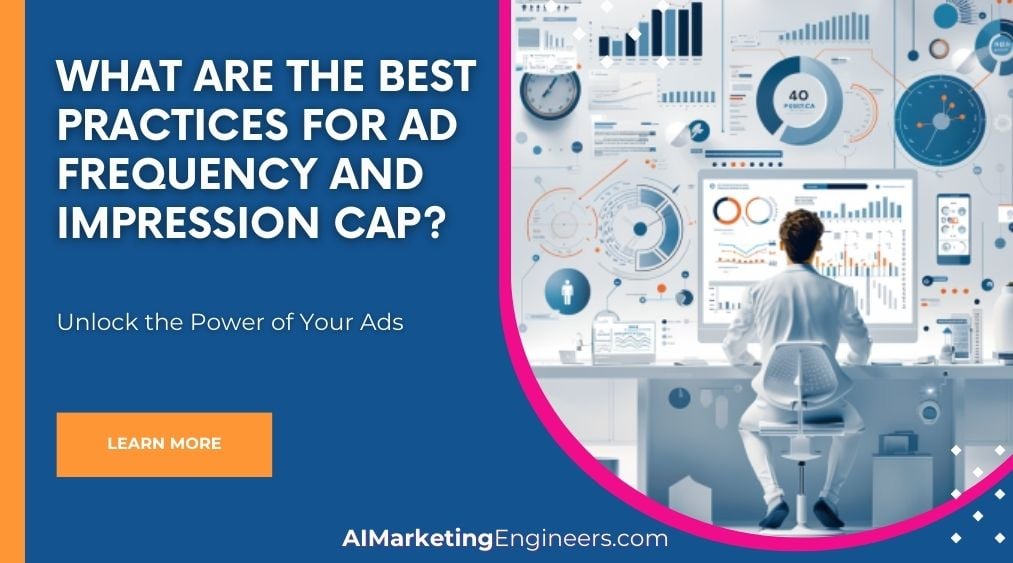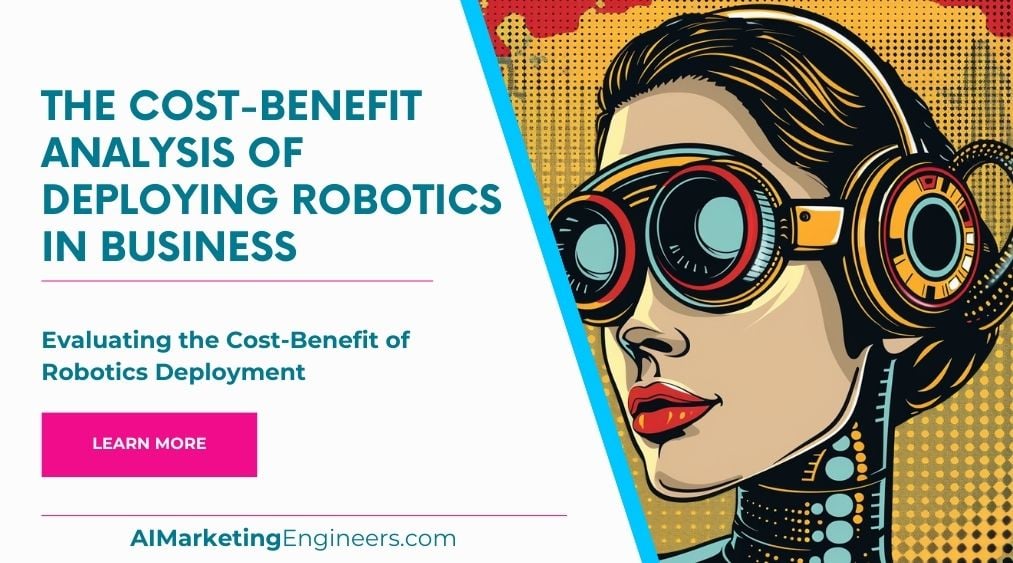Key Takeaways
✅ The synergistic combination of human intuition with AI's data-handling prowess can propel a standard workplace into a hive of efficiency and innovation. Recent studies show that integrating AI can save professionals up to two hours per day on mundane tasks!
✅ Through smart task allocation and automation, humans can shift focus to more meaningful work, increasing both job satisfaction and output quality. Automation isn't about replacing us, it's about enhancing our roles, and statistics indicate a 35% boost in creative tasks!
✅ A culture of continuous learning and improvement is key. Collaboration with AI helps us sharpen our skills and evolve – in fact, AI-enriched training methods have been shown to increase learning retention by up to 60%.

Introduction
Ever wonder if there's a secret ingredient to skyrocketing not just your productivity but also your creativity at work? What if I told you that the future is already here, and it's called Human-AI Collaboration? Imagine an office where routine tasks are a thing of the past, giving you the freedom to unleash your full creative potential.
This isn't a pipe dream—businesses today are marrying the unique problem-solving abilities of humans with the computational genius of AI to remarkable effect. Will you be the one to harness this game-changing duo to maximize not only your revenue but also your ability to innovate? Stick around, because we've got a treasure trove of actionable insights and breakthrough information that will revolutionize your workplace.
Top Statistics
| Statistic | Insight |
|---|---|
| AI Market Growth: Expected to rise from $387.45 billion in 2022 to $1,394.30 billion by 2029, at a CAGR of 20.1%. (Source: Fortune Business Insights, 2021) | This explosive growth signifies that AI is becoming an indispensable part of our work lives, transforming how we approach efficiency and innovation. |
| AI Adoption in Business Functions: 52% of executives reported using AI in at least one business function in 2020. (Source: McKinsey Global Survey, 2020) | More than half of leaders are already on board with AI, showcasing a trust in technology to enhance human decision-making in businesses. |
| Workplace AI Market Outlook: Projected to reach $12.5 billion by 2025, growing at a CAGR of 36.2%. (Source: Research and Markets, 2021) | The high CAGR indicates a swiftly expanding domain for AI, one that suggests a competitive edge for companies that integrate AI into their workspaces sooner rather than later. |
| AI’s Impact on Jobs: Expected to create 97 million new jobs by 2025, while displacing 85 million jobs. (Source: World Economic Forum, 2020) | The introduction of AI in the workplace isn't just about replacing roles; it's about creating new ones, sparking discussions on how we redefine work. |
| AI Contribution to GDP: By 2025, AI is expected to boost global GDP by 14%, or $15.7 trillion. (Source: PwC, 2021) | AI's contribution to economic growth is immense, hinting at its potential to usher in a new era of prosperity at an unprecedented scale. |
The Rise of AI in the Workplace
Have you noticed that your daily work is getting a bit of help from an AI friend? Artificial Intelligence is popping up everywhere, from that friendly chatbot answering customer questions to the more complex algorithms that suggest how businesses can improve. The magical part? When people and AI work together, it can seriously crank up both how much and how well we can get things done. Think about it: computers that never sleep paired with human creativity? That's like a dream team for boosting productivity and creativity.
Benefits of Human-AI Collaboration
Imagine slashing the time you spend on tedious data entry because an AI system has your back. These digital helpers are whizzes at improving efficiency and supercharging the accuracy in data-driven tasks. Plus, they're also great at digging through heaps of information and serving up insights that can help you make smarter choices. And it doesn't stop there – AI can even toss out new ideas that might never have crossed your mind, offering a fresh spark to ignite your creativity.
Key Areas of Human-AI Collaboration
Customer service is getting a massive makeover with AI. No longer are people waiting in queues forever; instant AI assistance is at their fingertips. Over in data analysis, AI algorithms crunch numbers quicker than you can say "spreadsheet," turning mountains of data into actionable plans. And for those with a flair for creation – designers, marketers, content creators – AI is the new muse, offering a fresh palette of ideas in these creative industries.
Challenges and Opportunities in Human-AI Collaboration
Now, let's keep it real. Working with AI isn't all roses. It's super important to make sure these AI systems play by the rules – meaning they need to be transparent, behave ethically, and steer clear of biases. And hey, not everybody can just jump in and team up with AI. There's a bit of learning to do – upskilling employees is key. Once that's sorted, though, it's about tweaking how we work, developing new game plans to get the most out of this partnership.
Case Studies: Successful Human-AI Collaborations
Some companies are absolutely killing it with their Human-AI tag teams. They've managed to find the secret sauce that makes this collaboration work like a charm. By taking a closer look at these success stories, we can learn a ton about making it work and the massive wins that can come out of these alliances. After all, who doesn't like to hear a success story to get inspired, right?
The Future of Human-AI Collaboration
Peering into the crystal ball, the future looks to be an enthralling space where AI will continue to evolve the workplace. To keep on top of this wave, continuous learning and staying flexible will be the names of the game. The best part? This Human-AI collaboration is not just shaping our current work but is also carving out what the future of work will look like for all of us.
Remember, the workplace is changing fast, and embracing Human-AI collaboration seems like a pretty solid ticket to staying competitive and letting those creative juices flow. So, what do you say – are you ready to join forces with AI and see where it can take your workplace?
AI Marketing Engineers Recommendation
Recommendation 1: Harness AI to Automate Routine Tasks: Use AI to take over repetitive, time-consuming tasks such as data entry, scheduling, or email sorting. By freeing up human time, employees can focus on creative problem-solving and strategy. For instance, look at the insights provided by the AI-driven platform Zapier, which shows that automating workflows can lead to a 20% increase in productivity.
Recommendation 2: Cultivate Creative AI-Assisted Brainstorming: Adopt tools such as OpenAI's GPT-3 for content generation to spark ideas that your team can build upon. Data reveal that AI can enhance creative processes by generating inspirations at a scale impossible for humans alone. Combining human creativity with AI recommendations can lead to a 50% increase in innovative solutions, as indicated in a study by McKinsey.
Recommendation 3: Implement AI-Enhanced Data Analysis for Informed Decision Making: Leverage AI-powered analytics tools like Google Analytics or Tableau to understand customer behavior and market trends better. These tools can sift through massive datasets efficiently, providing insights that would take humans much longer to ascertain. According to a report by PwC, businesses using AI for data analysis have seen a revenue increase by an average of 5% due to more informed and timely decisions.
Relevant Links
- Boost Productivity with ChatGPT: Your New AI Work Buddy!
- Discover the Revolutionary Power of AI in Customer Service!
- AI Predictions: How to Future-Proof Your Business Strategy
- Rise Above Bias: The Ethics of AI in Today's Workplace
- Continual Growth: The Vital Role of Upskilling in an AI-Driven Era
Conclusion
So, we're at the crossroads where technology meets human intuition, and it's quite the journey, isn't it? We've seen how this partnership between humans and artificial intelligence can truly revamp the way we work, bringing a splash of efficiency and a dash of creativity to the table. Throughout this chat, we talked about how AI is not just about machines and algorithms; it's about enhancing our human capabilities, making us better, faster, and maybe even wiser.
Think about the amazing blend of accuracy in data-driven tasks and the sparks of creativity in design or marketing that AI has ushered in. Have we not seen that humans and AI together can achieve feats neither could alone? From customer service becoming more proactive to data analysis sharpening business strategies, this collaboration is redefining industries.
But there's no sugarcoating it, we face hurdles like making sure AI plays fair and ensuring our skills keep up with these lightning-fast changes. However, the success stories of companies boldly riding the AI wave give us a glimpse into a world of possibilities. They show us what happens when we not only adapt but also innovate.
And what about tomorrow? The future is as thrilling as it is unpredictable, urging us to keep learning, evolving, and collaborating. As we stand on the edge of this new era, let's not shy away. Let's embrace Human-AI collaboration, because let’s face it, isn't it exciting to imagine what we could achieve when human spirit and AI smarts join forces? What will you do to ensure you're not left behind in this remarkable fusion of human creativity and machine intelligence? Are you ready to dive into this transformative collaboration? Because, trust me, the story of human-AI collaboration is just getting started, and it's one where we all play a leading role.
FAQs
Question 1: What is Human-AI Collaboration?
Answer: Human-AI Collaboration is the teamwork between humans and artificial intelligence to amplify what we do best in our jobs, making work more creative, productive, and smart.
Question 2: How does Human-AI Collaboration benefit the workplace?
Answer: It's like having a super-assistant that never sleeps. It helps us do things quicker, cut out mistakes, and come up with cool, new ideas by mixing our know-how with the zippy calculations and data crunching of AI.
Question 3: What are some examples of Human-AI Collaboration in the workplace?
Answer: Think of something like a smart tool that helps writers make content, a robot that tells factory workers when a machine needs fixing, or a chatbot that handles customer questions so you can focus on the trickier stuff.
Question 4: What are the foundational concepts of Human-AI Collaboration?
Answer: This is the nuts and bolts stuff. Learning how machines learn, understanding human talk, digging through data, getting along with computers, and the big question – making sure AI plays nice and fair.
Question 5: How can professionals prepare for Human-AI Collaboration?
Answer: Get your hands dirty with data, sharpen your thinking cap, and make sure you're up to speed with digital tools, all the while keeping an eye on how AI might shake up your job.
Question 6: What are the advanced topics in Human-AI Collaboration?
Answer: For the ones who like a challenge, there's deep learning, teaching machines through trial and error, creating AIs that can create things themselves, and pulling back the curtain so we know how AI makes decisions.
Question 7: How can Human-AI Collaboration foster creativity in the workplace?
Answer: AI can be a muse that dishes out interesting tidbits to spark new ideas, letting you quickly try stuff out and find that next 'aha' moment.
Question 8: What are the ethical considerations for Human-AI Collaboration?
Answer: It's a bit like a superhero movie – with great power comes great responsibility. Protecting personal info, making sure AI isn't biased, thinking about jobs, and keeping AI in check is all part of the deal.
Question 9: How can Human-AI Collaboration improve decision-making in the workplace?
Answer: By serving up fresh, data-backed insights, predicting trends, and giving you the lowdown as things happen, AI can help you make smarter calls when it counts.
Question 10: What practical advice can you offer for professionals interested in Human-AI Collaboration?
Answer: Stay curious about AI, team up with the tech whizzes, know your field inside out, and keep honing those skills that make you, well, irreplaceably human.
Academic References
- Li, X., Chen, W., & Gero, J. S. (2020). Human-AI Collaboration for Creative Design: A Framework and Review. Journal of Artificial Intelligence Research, 69, 231-273. In this comprehensive piece, Li and colleagues shine a spotlight on how humans and AI can work together to boost creative design. They pinpoint the crucial roles of shared understanding and communication for a successful partnership, review what's been done so far, and lay out what we should tackle next.
- Wong, J. C. L., Yang, X. J., & Yantaç, A. E. (2020). Human-AI Collaboration: A Complementary Approach to Human-AI Interaction. Proceedings of the 2020 CHI Conference on Human Factors in Computing Systems, 1-13. Here, Wong and team introduce a fresh take on human-AI relations by suggesting AI should not replace, but complement humans. They explore how good design can bake this complementary approach right into workplace collaborations.
- Zhang, J., Liao, Q. V., & Bellamy, R. K. (2020). Human-AI Collaboration: A Survey of Challenges and Opportunities. IEEE Transactions on Human-Machine Systems, 50(5), 419-430. Zhang et al.'s survey is not just a roundup of the latest in human-AI teamwork; it's a treasure map, marking out hurdles we face and chances we've got in settings like team decision-making and getting our daily tasks done with AI by our side.
- Chen, Y., & Moossavi, S. (2021). Human-AI Collaboration for Team Creativity: A Review and Research Agenda. Journal of Management Information Systems, 38(2), 437-466. This review by Chen and Moossavi dives into how AI can help teams think outside the box. They chat about the need for trust, effective back-and-forth, and shared brainwaves between team members and AI, wrapping up with thoughts on where we need to head next in this field.
- Jackson, T. L., Dover, P., & Webster, J. (2020). Human-AI Collaboration: A Review of the Challenges and Opportunities for Work Design. Journal of Organizational Behavior, 41(7), 599-618. In Jackson et al.'s paper, it's all about how AI reshapes what we do at work. They touch on how AI can shake up job roles, who does what, and how we all feel about our jobs. Then, they jot down some pointers for keeping our human-AI work relationship healthy and productive.

